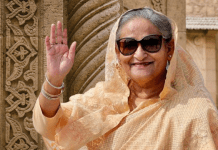Sri Lanka is celebrating 70 years of friendly relations with Australia. Both the countries want to strengthen bilateralism through economic integration. The short and long term engagement of the South Asian Island and the Asia Pacific nation can be a basis for opening opportunities for other neighbouring economies.
Despite disparities between the two nations, their similarities have united them. During an official visit to Sri Lanka, Australian Prime Minister Turnbull said: “I look forward to continuing our discussions on strengthening our economic links, defence engagement and our work together to combat trans-national crime particularly people-smuggling”.
Further, the Colombo Commonwealth summit of 2013 was a major change that laid a solid diplomatic foundation with the presence of Premier Abbott. The long-lived bilateral bonds of both countries go beyond diplomacy.
The Sri Lankan conflict was a challenging moment for Australian foreign relations with the island country. Australia was not willing to take sides during this time and the relationship drifted a little bit. Yet, the Australian government has positively contributed to various socio-economic causes to boost Sri Lankan society, especially in war-affected areas.
The Australian Department of Foreign Affairs and Trade said that they provided an approximate figure of AUS$27 million in 2008 as overseas development aid (ODA) to Sri Lanka which was affected by war. After ending the conflict in 2009 Australia increased ODA levels. Followed by this development assistance in 2018 Australians provided AUS$28.6 million.
Compared to 1990s, South Asian consumers are now on Australian investors’ radar screen, as their economy is growing faster than ever. The present economic plan of Sri Lanka is making it much easier for Australian companies to invest in the island nation. The clear indication of this bilateral stability doubled in 2017, bringing this two-way trade figure to AUS$1.4 billion.
Therefore, current Australia’s High Commissioner to Sri Lanka, H.E. Bryce Hutchesson said, “This year’s figures reflect the steady growth in commercial engagement between our two countries. As close friends and Indian ocean neighbours, we’re now seeing the trade and investment relationship expand as Sri Lanka’s economy moves forwards and Australian companies take an increased interest in the Sri Lankan market”.
There are several factors behind the economic integration between Australia and Sri Lanka. One of the major reasons is due to its vital geographical position in the Indian Ocean. It is remarkable that Sri Lanka forms a major link for Australian entrepreneurs to gain great preferential market access to over 1.6 billion consumers through South Asian Free Trade Area (SAFTA) arrangement.
This framework would be a huge advantage for Australian’s because their investors have access to low-cost outsourcing opportunities. Yet with low coordination efforts, this may lead to more promising outcomes. As per Department of Foreign Affairs and Trade, Australian companies have invested over AUS$89 million in 2017. With this growing trust, Sri Lanka needs to convert the current foreign policy direction that requires to gain a foothold in the Australian market.
Rapid mobility of air services is influencing tourism demands. This has resulted in a large number of Australians visiting the island country. As per Sri Lanka Tourism Development Authority, many as 80000 Australian tourists visited Sri Lanka in 2017.
Recently, Sri Lanka and Australia acted differently by supporting sports diplomacy. In this regard, cricket made much sense. There are great stories of how Australian coaches mentored the Islanders prior to Sri Lankans becoming globally famous cricketers in 1996. Today sports diplomacy has intensified to that level where a trophy named after the iconic cricketers Muttiah Muralitharan and Shane Warne.
The symbolic power of education is a part of a larger goal of bilateral ties. Australian institutes provide standardize facilities for many Sri Lankan students to pursue higher education. Therefore, statistics highlighted over 9000 Sri Lankan students studying various subjects in Australia. This country has emerged as the second most popular tertiary study destination for Sri Lankans.
For the stronger diplomatic relations, Sri Lankan foreign policymakers require an out of the box thinking. Australian policymakers may use their influence to create a conducive environment for these bonds to grow. Its important to emphasis on continuous collaboration for boosting bilateral relations.
More News at EurAsian Times
- Is PM Modi Planning to Divide J&K into 3 Parts Before 2019 Elections?
- India Using Israel’s “Palestine Strategy” To Crush Rebellion in Kashmir?
- Saudi Money, US Weapons, Israeli Intelligence Fuelling Arab NATO – Iran
- Indian Army Knows The Exact Location of 12 Terror Launch Pads in Pakistan; But Can They Strike?




